NCERT Solutions for Class 10 History Chapter 2 - Nationalism in India

Q1. Explain:
(a) Why the growth of nationalism in the colonies is linked to an anti-colonial movement?
Ans: The growth of nationalism in the colonies is linked to an anti-colonial movement as:
- People began discovering their unity in the process of their struggle with colonialism.
- The sense of being oppressed under colonialism provided a shared bond that tied many different groups together.
- However, each class and group felt the effects of colonialism differently.
- Their experiences were varied and their notions of freedom were not always the same.
- The Congress under Mahatma Gandhi tried to forge these groups together within one movement. However, unity did not emerge without conflict.
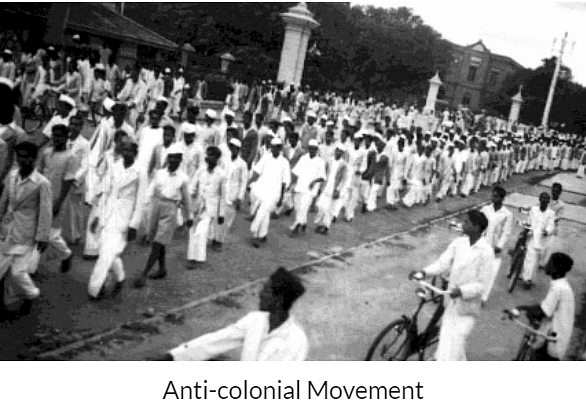
(b) How the First World War helped in the growth of the National Movement in India.
Ans: War created a new political and economic situation.
- It led to a huge increase in defence expenditure, which was financed by war loans and increasing taxes: custom duties were increased, and income tax was introduced.
- The forced recruitment in villages caused widespread anger.
- Crops failed; this resulted in an acute shortage of food.
- 12 to 13 million people died due to famines and epidemics.
(c) Why Indians were outraged by the Rowlatt Act.
Ans: Indians had hoped that after the war, their hardships would be over and that the government would take steps to improve their condition.
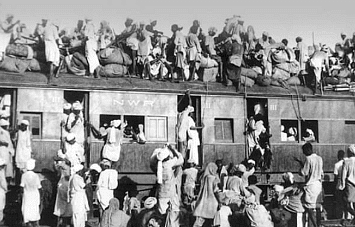
- On the other hand, the government passed the Rowlatt Act in the Imperial Legislative Council in 1919 against the united opposition of the Indian members.
- The Act gave the government enormous powers to repress political activities. It allowed the detention of political prisoners without trial for two years.
- Its provisions meant the suspension of two principles of justice - trial by jury and habeas corpus.
(d) Why Gandhiji decided to withdraw the Non-Cooperation Movement.
Ans: Gandhiji decided to withdraw the Non-Cooperation Movement because of the following reasons:
- In February 1922, at Chauri Chaura in Gorakhpur (UP), a group of peaceful Indian demonstrators turned violent. They burnt alive 22 policemen. When Mahatma Gandhi learned about it, he decided to withdraw from the Non-Cooperation Movement.
- He felt that the movement was turning violent in many places and satyagrahis needed to be properly trained before they would be ready for mass struggles.
- Within Congress, some leaders like C.R. Dass and Motilal Nehru were also tired of mass struggles and wanted to participate in elections for the provincial councils.
Q2. What is meant by the idea of satyagraha?
Ans: Satyagraha is pure soul-force. Truth is the very substance of the soul. That is why this force is called Satyagraha.
- The idea of Satyagraha suggested that if the cause was true if the struggle was against injustice, then the physical force was not necessary to fight the oppressor.
- Without seeking vengeance or being aggressive, a satyagrahi could win the battle through non-violence. Thus non-violence is the supreme dharma.
- In Satyagraha, oppressors - had to be persuaded to see the truth instead of being forced to accept the truth through the use of violence.
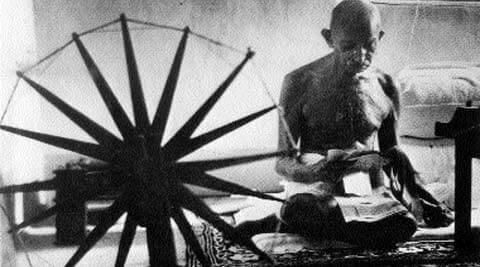
Q3. Write a newspaper report on:
(a) The Jallianwala Bagh massacre
(b) The Simon Commission
Ans:
(a) The Jallianwala Bagh massacre:
Amritsar: April 13 1919- Today is Baisakhi. A large crowd of people had gathered in the enclosed ground of Jallianwala Bagh. Some came to protest against the government’s Rowlatt Act. Others had come to attend the annual Baisakhi fair. Being from outside the city, many villagers were unaware of the Martial Law that had been imposed. Gen. Dyer entered the area, blocked the exit points and opened fire on the crowd, killing hundreds.
His object was to ‘produce a moral effect’ to create in the minds of satyagrahis a feeling of terror and awe.
After the massacre, the wounded were left without medical help. The number of exact casualties is not known. It is an example of oppressive rule by the Imperialist Power.
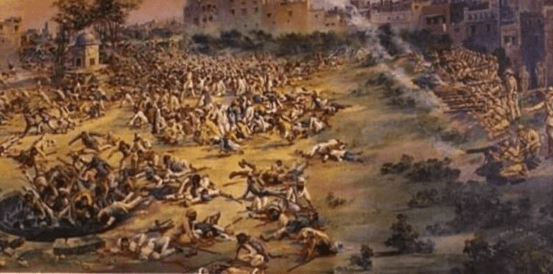 Jallianwala Bagh Massacre(b) The Simon Commission:
Jallianwala Bagh Massacre(b) The Simon Commission:
Lahore: 30th October 1928 - Today, the Simon Commission, to look into the functioning of the constitutional system in India and to submit a detailed report on reforms, reached Lahore. It is really strange that though the object of the Commission is to look into an Indian problem, no Indian has been appointed as its member. All the members were Britishers. This is a gross injustice. Indians must raise their voice against it and resist the Commission at all levels so that the British government may include Indians in the Commission.
Today, people gather at the station. Lala Lajpat Rai and others led the procession and raised slogans, “Simon Go Back”. There was a clash between police and protesters. Lala Lajpat Rai was hit near his heart and felt pain.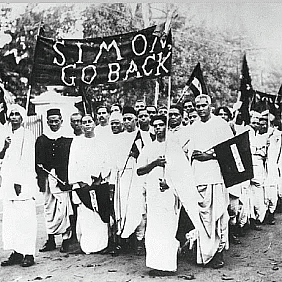
Q4. Compare the images of Bharat Mata in this chapter with the image of Germania in Chapter 1.
Ans: There are two images of Bharat Mata one by Abanindranath Tagore and the second by another artist.
- In the image by Tagore, Bharat Mata is portrayed as an ascetic figure. She has been shown as calm, composed, divine and spiritual. She is shown also as dispensing learning food and clothing. Abanindranath Tagore tried to develop a style of painting that could be seen as truly Indian.
- In the second figure, Bharat Mata is shown with a Trishul standing beside a lion and an elephant, which are both symbols of power and authority. This figure contrasts with the one painted by Abanindranath Tagore.
- On the other hand, the image of Germania by Philip Veet wears a crown of oak leaves, which stands for heroism. Thus, there is one similarity between Bharat Mata and Germania - both have an element of bravery, i.e., power, authority and heroism.
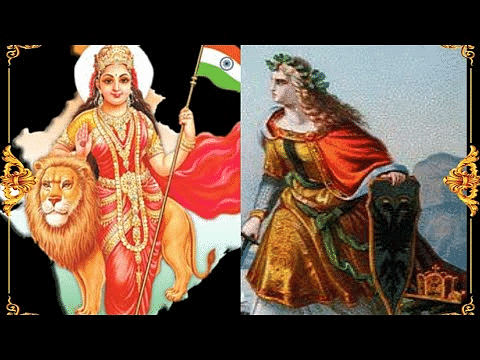
Q5. List all the different social groups which joined the Non-Cooperation Movement of 1921. Then choose any three and write about their hopes and struggles to show why they joined the movement.
Ans: The different social groups which participated in the Non-Cooperation Movement are listed below:
- Middle-class citizens in towns and cities
- Students and teachers
- Merchants and traders
- Lawyers
- Peasants
- Tribal communities
- Plantation workers
- Artisans and craftsmen
- Women
Three Social Groups and Their Hopes and Struggles:
1. Peasants
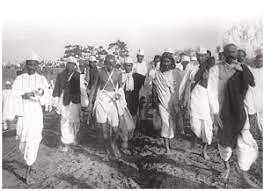
- Hopes: The peasants joined the Non-Cooperation Movement hoping to end the oppressive taxation and the harsh policies imposed by the British landlords. They sought relief from the heavy taxes, reduced rents, and the abolition of the 'begar' system (forced labor without payment).
- Struggles: Peasants faced severe economic hardships, including high taxes and the exploitation by landlords. Despite the risk of violence and repression from authorities, they participated in protests, boycotts, and no-tax campaigns, believing that the movement would improve their living conditions and free them from exploitation.
2. Tribal Communities:
- Hopes: Tribal communities joined the movement with the hope of reclaiming their traditional rights over forest lands, which had been restricted by British laws. They wanted to regain control over their resources and resist the colonial government's interference in their way of life.
- Struggles: Tribals struggled against the British policies that curtailed their access to forests, which were essential for their livelihoods. They faced displacement and loss of land, leading to widespread poverty. The movement gave them a platform to resist these injustices and demand their rights.
3. Plantation Workers
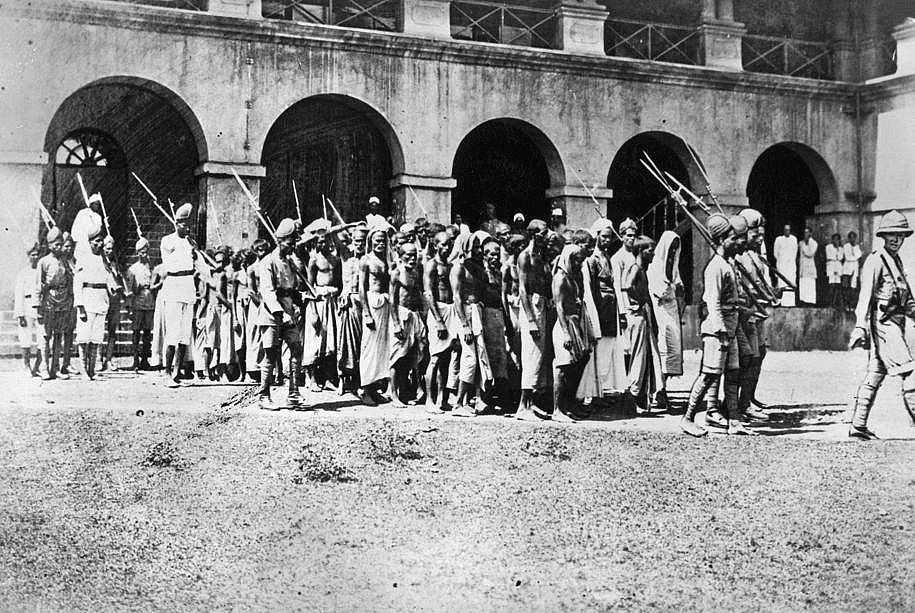
- Hopes: Plantation workers, particularly those working in tea estates in Assam, joined the Non-Cooperation Movement with the hope of improving their working conditions and gaining freedom to return to their homes. They believed the movement would help them escape the oppressive labor contracts that kept them bound to the plantations.
- Struggles: The workers endured harsh living and working conditions, with little pay and no rights to leave the plantations. They were often trapped in contracts that prevented them from returning home. Their participation in the movement was driven by a desire to break free from these exploitative conditions and seek a better future.
Q6. Discuss the Salt March to make clear why it was an effective symbol of resistance against colonialism.
Ans: Mahatma Gandhi found in salt a powerful symbol that could unite the nation.
- The Salt March started from Gandhi’s ashram in Sabarmati to Dandi, a coastal town located in the state of Gujarat.
- The Salt March was over a distance of 240 miles.
Development of Events – Salt March and Civil Disobedience Movement
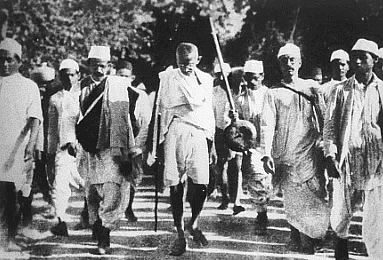
- Mahatma Gandhi found in salt a powerful symbol that could unite the nation as it was consumed by rich and poor alike.
- He declared that the tax on salt and the government monopoly over its production was the most oppressive face of British rule.
- Gandhiji sent a letter to Viceroy Irwin stating eleven demands.
- The most stirring of all was the demand to abolish the salt tax.
- Irwin was unwilling to negotiate, so Gandhiji started the Salt March with 78 volunteers.
- He reached Dandi, violated the law and made salt.
- This March developed the feeling of nationalism, people in different parts of the country broke the salt law and manufactured salt and demonstrated in front of government salt factories.
- Thus, the Salt March was an effective symbol of resistance against colonialism.
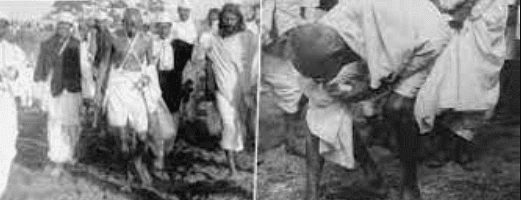
Q7. Imagine you are a woman participating in the Civil Disobedience Movement. Explain what the experience meant to your life.
Ans: It was a time when women were kept inside the walls. A woman's role was considered to be that of a homemaker. Though I got a good education, I was not allowed to take part in social or political activities. However, I thought that by participating in the Civil Disobedience Movement, I could be a part of the nation-making process. So, at the call of Gandhiji, I couldn't resist myself. Revolting against my family traditions, and I became an active member of the movement. It was a proud moment for me to participate in Gandhi's Civil Disobedience Movement. It was a motivating experience for me when I tended to those injured in the lathi-charge. It was like taking care of my own brother. I was full of nationalistic fervour. It was the most memorable and proud phase of my life.
Q8. Why did political leaders differ sharply over the question of separate electorates?
Ans: Dr B.R. Ambedkar, who organised the Dalits into the Depressed Classes Association in 1930, clashed with Mahatma Gandhi at the second Round Table Conference by demanding separate electorates for Dalits.
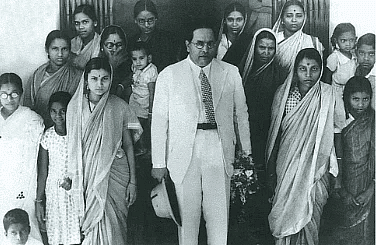
- When the British government conceded Ambedkar’s demand, Gandhiji began a fast unto death. He believed that separate electorates for Dalits would slow down the process of their integration into society.
- Ambedkar ultimately accepted Gandhiji’s position, and the result was the Poona Pact of September 1932.
- Muhammad Ali Jinnah was willing to give up the demand for separate electorates if Muslims were assured reserved seats in the Central Assembly and representation in proportion to population in the Muslim-dominated provinces (Bengal and Punjab).
- Negotiations over the question of representation continued, but all hope of resolving the issue at the All Parties Conference in 1928 disappeared when M.R. Jayakar of the Hindu Mahasabha strongly opposed efforts at compromise.
|
66 videos|632 docs|79 tests
|
FAQs on NCERT Solutions for Class 10 History Chapter 2 - Nationalism in India
| 1. What were the main factors contributing to the growth of nationalism in India? |  |
| 2. How did the Non-Cooperation Movement contribute to the growth of nationalism in India? |  |
| 3. What role did the Rowlatt Act play in the nationalist movement in India? |  |
| 4. How did the partition of Bengal in 1905 contribute to the growth of nationalism in India? |  |
| 5. What was the significance of the Salt Satyagraha in the Indian nationalist movement? |  |

















